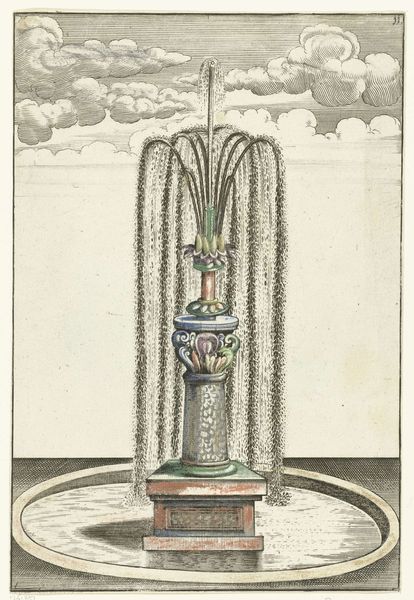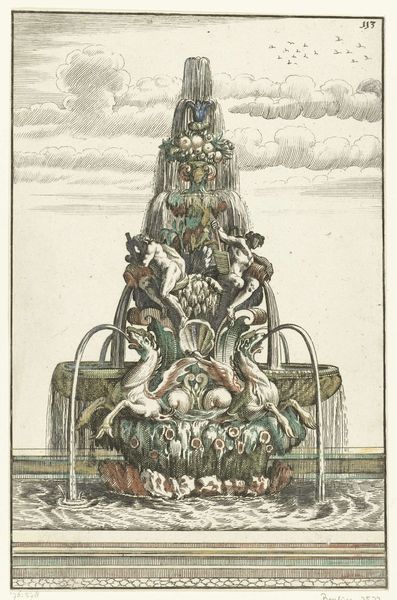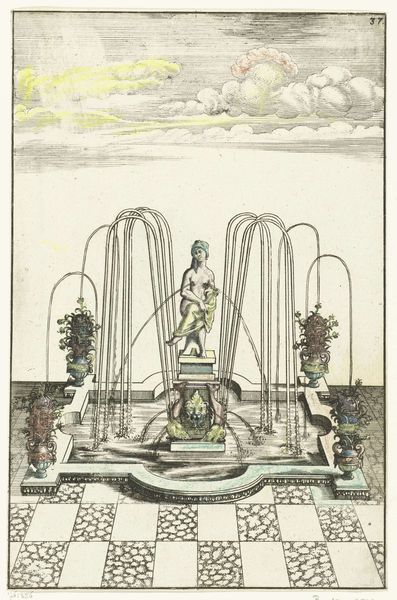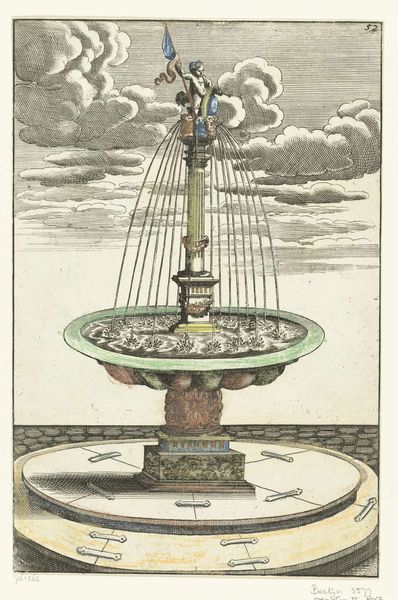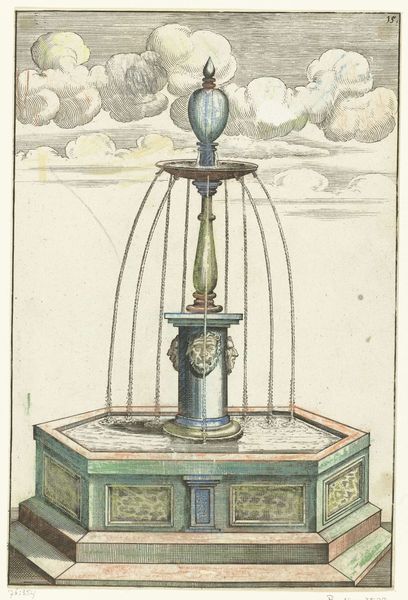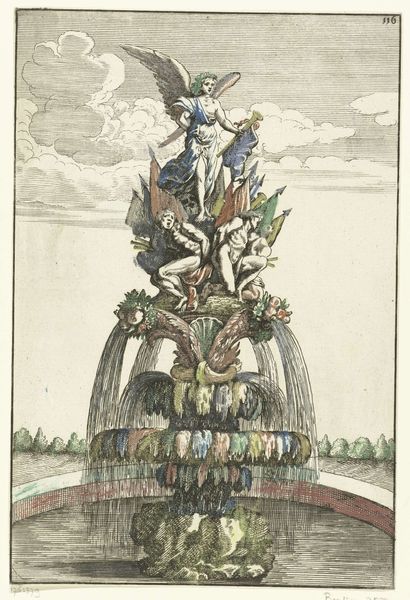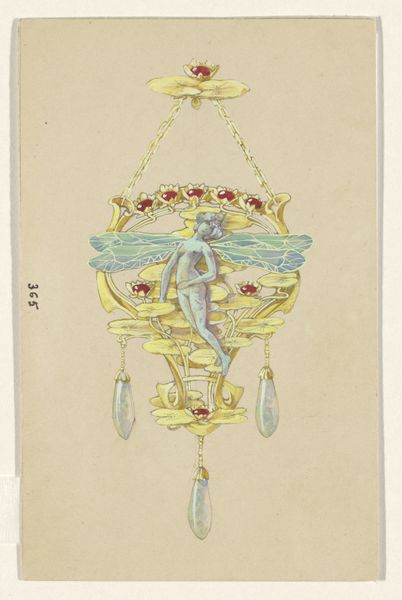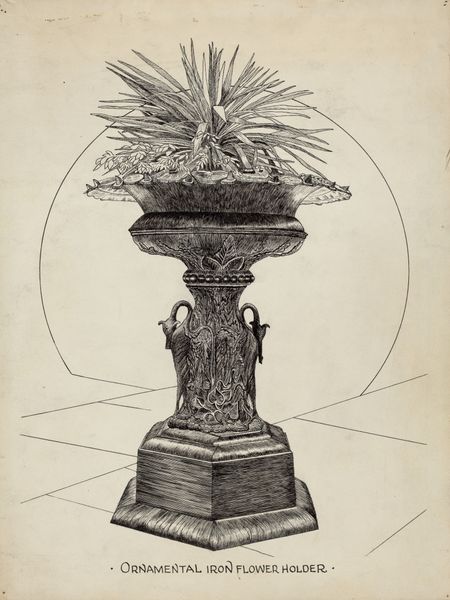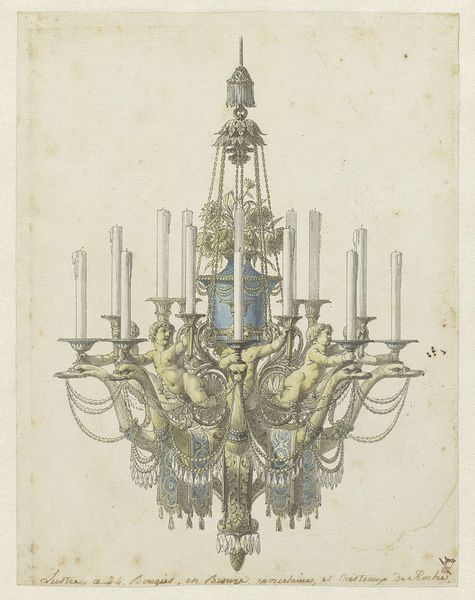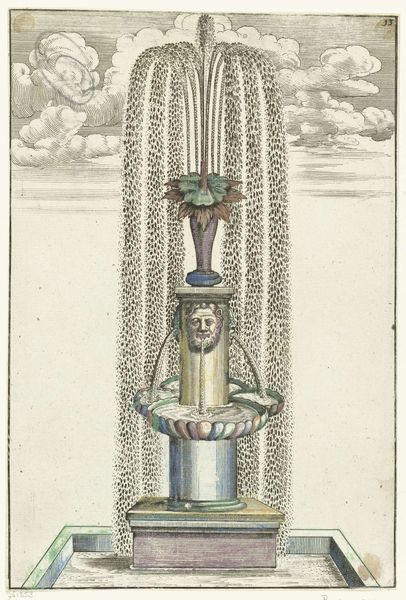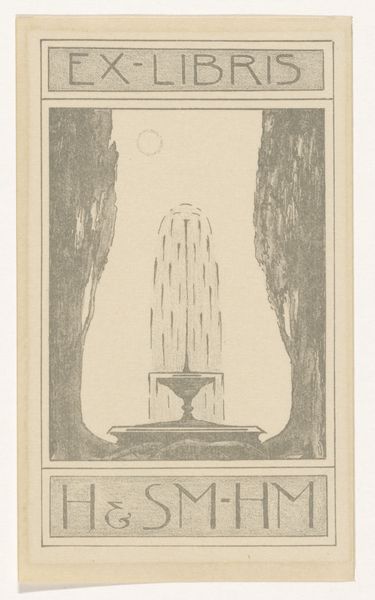
drawing, engraving, architecture
#
drawing
#
baroque
#
landscape
#
form
#
geometric
#
line
#
engraving
#
architecture
Dimensions: height 267 mm, width 180 mm
Copyright: Rijks Museum: Open Domain
This hand-colored engraving shows a fountain comprised of basins and a mountain. Though we don’t know who made it or exactly when, its style suggests it came from Northern Europe. What does it mean to create an artificial mountain? What are the cultural references behind this imagery? In Europe, from the Renaissance onward, fountains were powerful symbols of status and control. Water, often diverted from great distances, demonstrated the owner's power over nature and his ability to provide and control resources. This applied not just to royalty but to the church, municipal governments and wealthy individuals. We can look at period emblem books and garden design manuals to understand the symbolism and engineering of fountains. By studying these social and institutional histories, we can better understand not just the design but also the social hierarchies of the period.
Comments
No comments
Be the first to comment and join the conversation on the ultimate creative platform.
